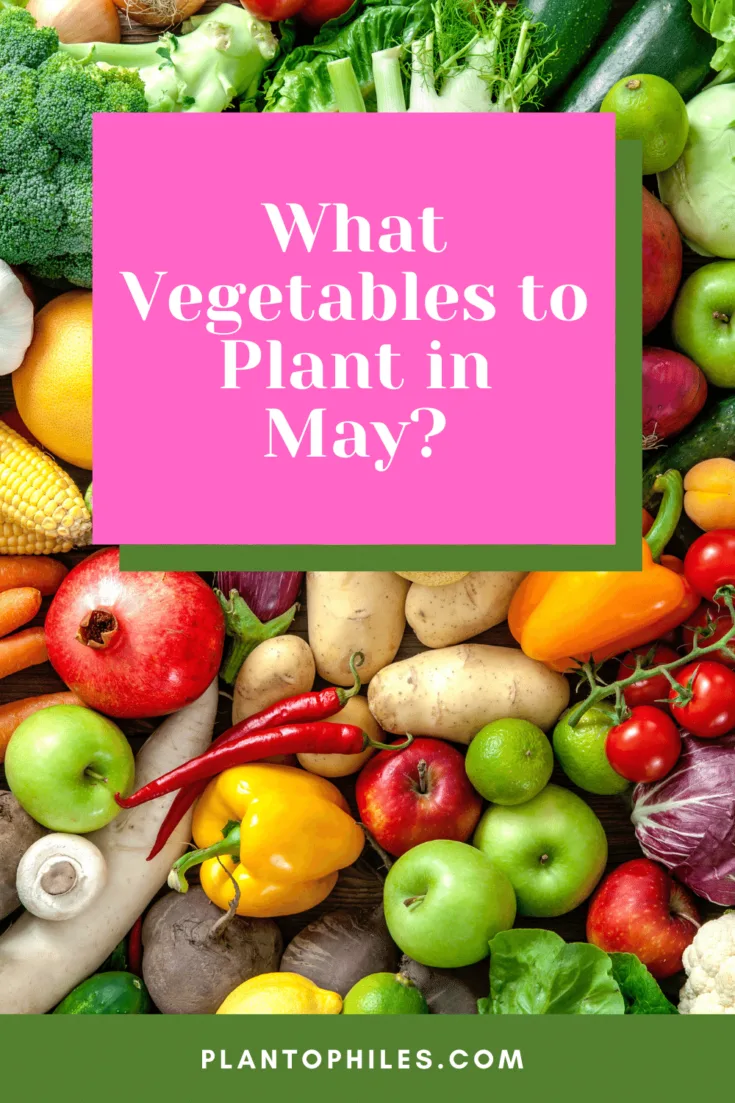What Vegetables to Plant in May?
Growing your own vegetables can be fun, frustrating, or a combination of the two.
How productive your vegetable patch is will depend on how thoroughly you planned your growing strategy.
In nearly all areas, May is a month of warmer soil temperatures (with temperatures over 70 degrees Fahrenheit).
That’s the perfect temperature for seed germination.
That means there’s no need to start seed indoors, transplant seedlings, or harden off plants before transplanting them in garden soil.
Some long-season crops such as onions can take over 120 days to fully mature, and those can benefit from getting a head start from indoor seed starting.
May isn’t too late for direct sowing though.
So, what vegetables should you grow in May? Find out in the text below.
Table of Contents
What Vegetables to Plant in May?
Vegetables that are ideal for direct sowing in May include tomatoes, corn, beans, onions, cucumbers, peppers, radishes, turnip, peas, and sweet potatoes. Cool-season crops can still be grown if adequate mulching is applied to control soil temperatures.
The vast majority of vegetables need consistent soil temperatures between 60 and 85 degrees Fahrenheit.
When temperatures rise over 95 degrees Fahrenheit, bolting can happen, which renders your vegetables inedible.
Vegetables Best Suited to Direct Sowing in May
1. Tomatoes
Tomatoes are warm-weather crops that won’t tolerate frost.
These should only be directly planted in the ground soil a few weeks after the last expected frost date.
They need temperatures over 50 degrees Fahrenheit consistently, with the exception being for heirloom tomatoes such as the German Queen tomato that requires higher temperatures above 80 degrees Fahrenheit.
Tomato seeds take up to 11 days to germinate, and at least 74 days before they’re ready for harvesting.
Larger beefsteak tomato varieties will benefit from being started indoors then transplanted.
For direct sowing tomato plants in May, plant baby or cherry tomatoes that are faster-growing varieties.
According to Cornell University tomatoes take 6-12 days to emerge after planting at around 75 F to 90 F.
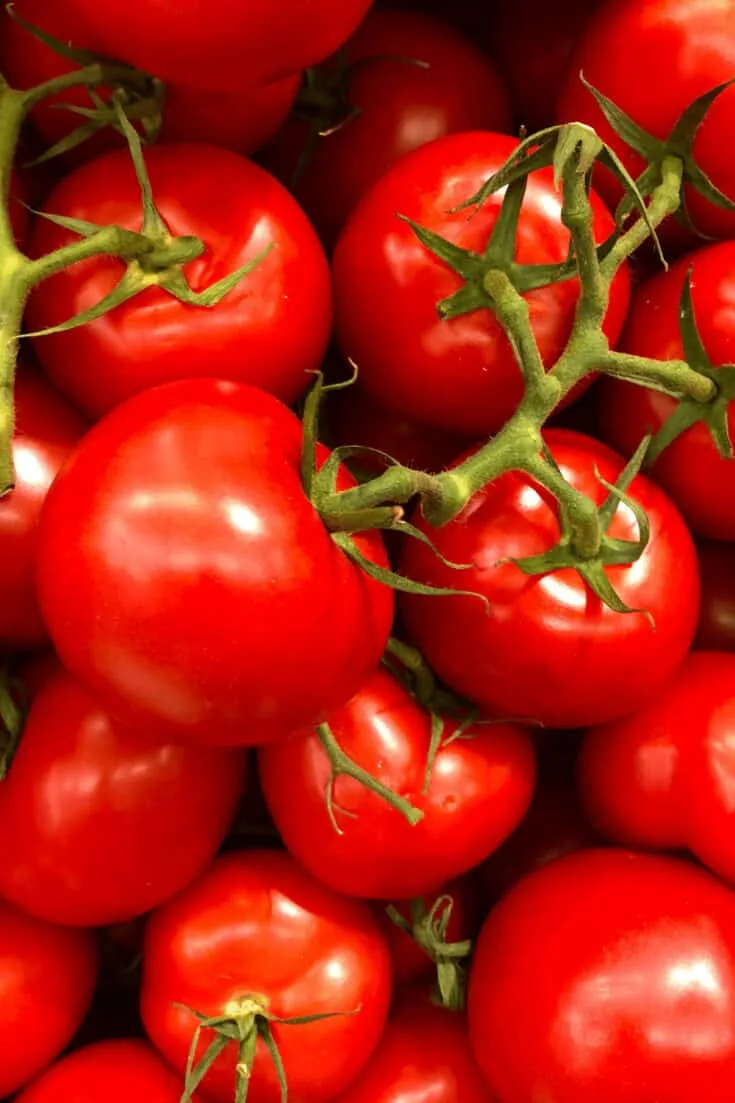
Tomatoes can be planted in May
2. Corn
Similar to tomato seeds, corn seeds won’t germinate in soil temperatures below 50 degrees Fahrenheit.
In fact, aim for no lower than 60 degrees Fahrenheit to ensure successful germination.
As corn is wind-pollinated, they grow better in blocks, rather than rows.
You’ll get better results with a block of 4 x 4 corn plants planted 6 inches apart than you would with a single row spaced 36 inches apart.
Corn is susceptible to transplant shock so these are better suited to direct sowing.
As corn is a long-season crop, mid to late May is the last chance to plant these from seed to have them ready for harvesting before the last frost date.
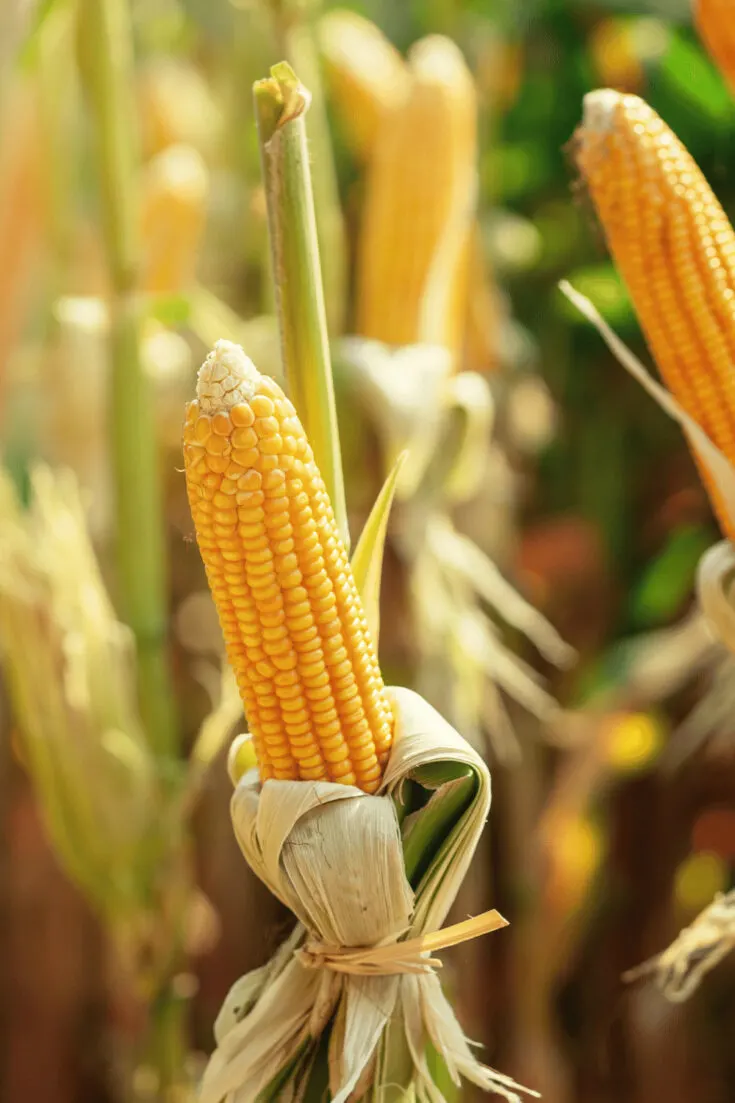
Corn can be planted directly into soil in May
3. & 4. Lima and Soya Beans
Beans can be grown from early Spring. However, lima beans and soya beans are the only ones suited to summer growing.
Like all other beans, lima and soya beans are fast growers. But, these types of beans need soil temperatures between 70 and 80 degrees Fahrenheit.
Apart from the two, all other beans do just as well with less heat.
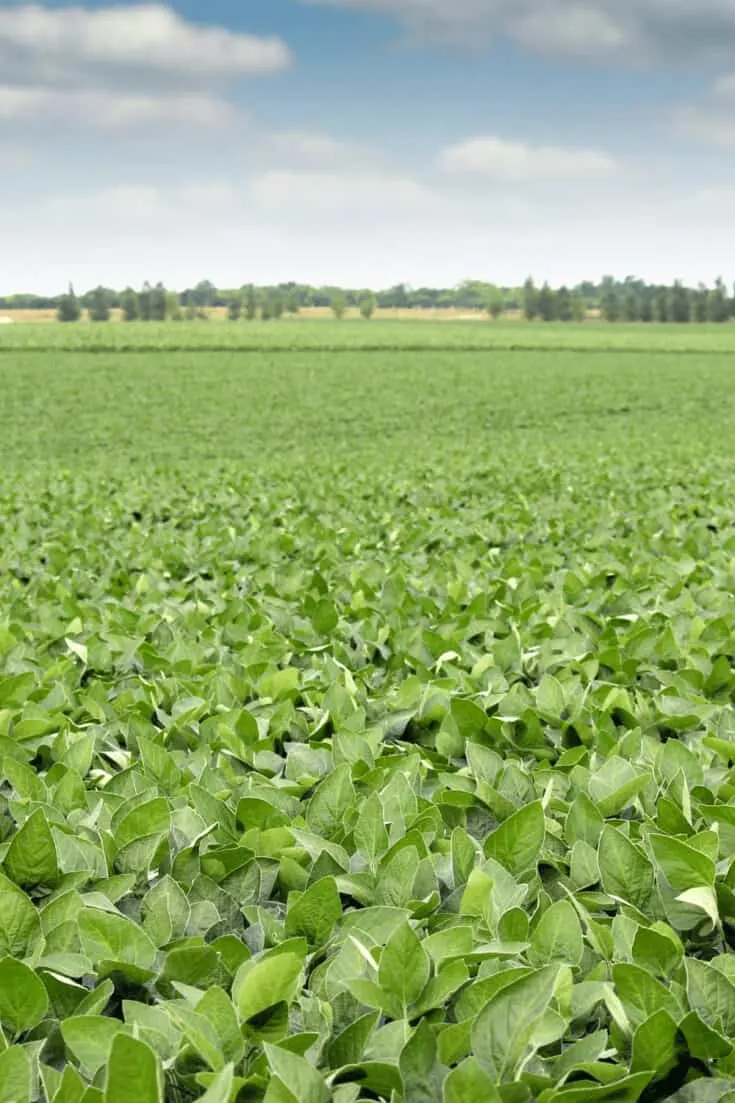
Soya Beans and Lima beans are a perfect plant to plant in May
5. Onions
Onions are long-season crops and are considered to be one of the hardest crops to grow.
They can be grown from seeds, sets, or bulbs, but growing from seed will always grow bigger onions.
For direct sowing, onion seeds need to be planted early in May.
The type of seed you use will depend on where you’re located.
- For gardens with 10 to 12 hours of full sun, choose short-day onions.
- For gardens that get 14 hours of full sun, choose long-day onions.
- Day-neutral onions are suited to gardens with varying levels of sunlight. They’ll grow regardless of how much sunlight they get.
The more sun they receive, the bigger a bulb they’ll produce. Shorter daylight hours will mean smaller onions.
For all varieties, 90-days is the optimal growing time with soil temperatures consistently above 70 degrees Fahrenheit.
For most areas, early May is ideal to plant onion seeds directly in garden soil to have them ready for harvest by September.

Plant onions in early May
6. Cucumber
The more moist and warm the soil is, the faster the seedlings will sprout.
Oftentimes, they grow as fast as a few days after seed planting.
The ideal temperature for seed germination for cucumbers is over 60 degrees Fahrenheit.
Cucumbers are ideal companion plants to grow with corn and tomatoes.

Cucumbers are perfect to plant in soil in May once the temperature is above 60 degrees Fahrenheit
7. Radishes
Radishes are among the fastest-growing root vegetables that are ready to harvest in just a few weeks.
Thing is, they detest scorching temperatures.
To avoid your radishes bolting, plant from seed in early May so they’re ready to harvest before the peak temperatures of summer.
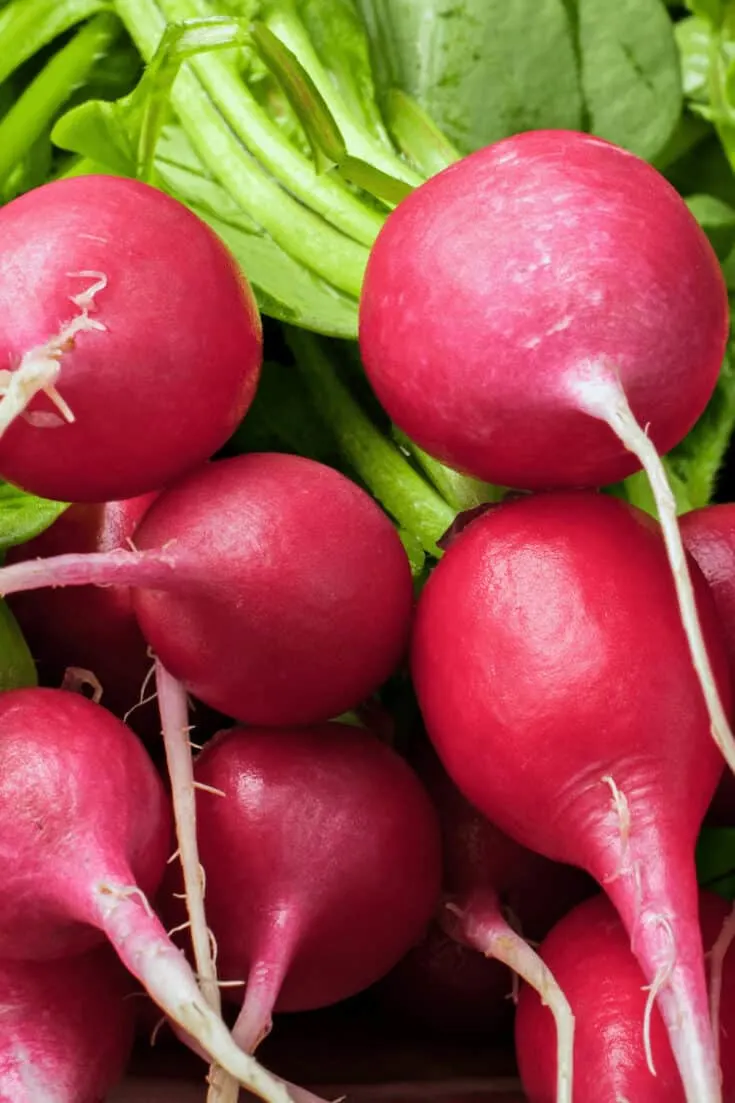
Plant Radishes in early May before the summer heat and harvest them within weeks
8. Sweet potatoes
Sweet potatoes are really long and warm-season growers.
They’re best planted at least 4 weeks after the last frost date has passed.
Some varieties need as much as 4 months of temperatures over 75 degrees Fahrenheit. The hotter the climate, the better they grow.
Planting sweet potatoes in late May will give them sufficient time to germinate, ready to make the most of the hotter summer temperatures.
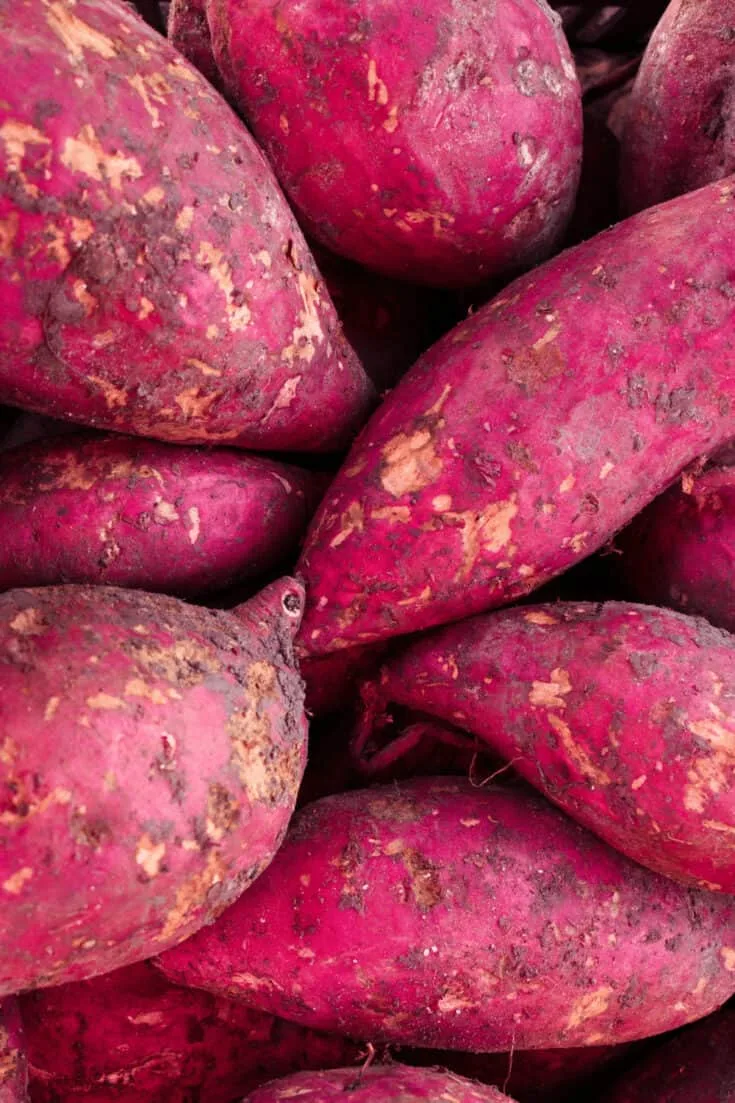
Plant sweet potatoes 4 weeks after the last frost
9. Turnips
Turnips are cool-season crops that can take from 5 weeks to 2 months to mature.
They need to be harvested before the peak of summer.
In most areas, May is the last opportunity to plant turnips for them to be harvested before the height of summer temperatures.
June and July are too hot for planting turnips so if you plan on growing these, get them into your garden before the end of May.
For these veggies, the earlier you plant them, the better yield they produce.
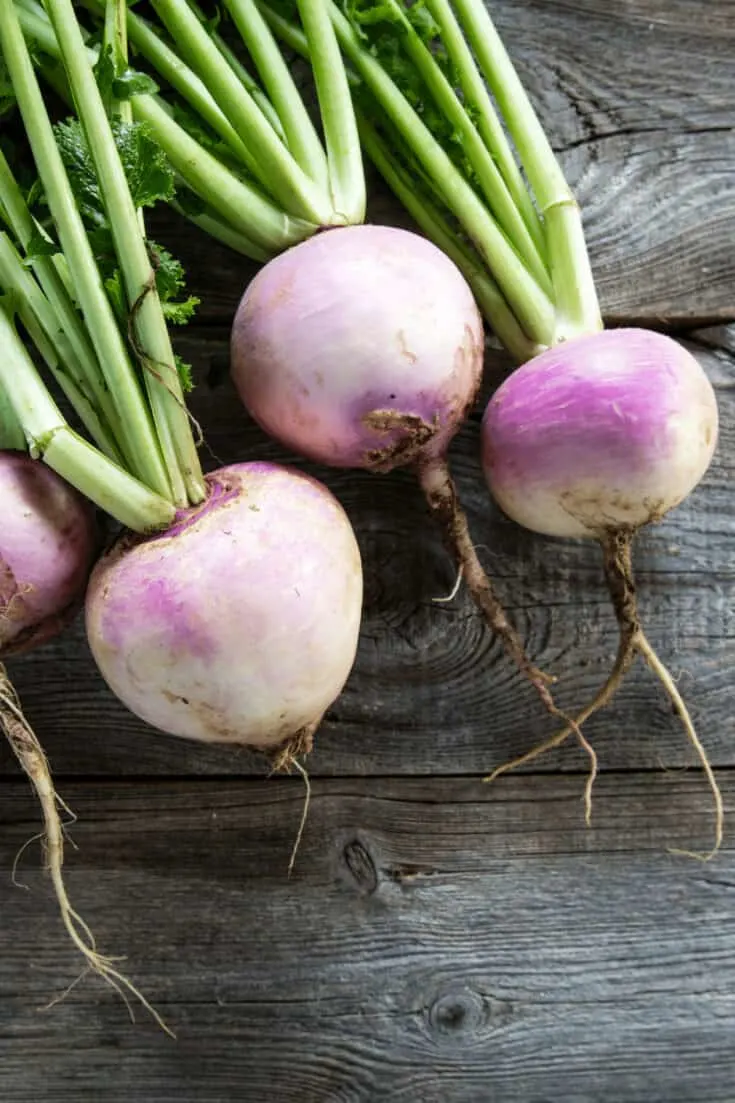
May is the last option to plant turnips in many regions just before the summer heat
Should You Plant or Transplant Vegetables in May?
Depending on the crop you’re growing, or if you want to maximize crop production, seeds can be started indoors.
After which, you can transplant the seedlings or plants in garden soil.
In May, soil temperatures are rising and, in most areas, soil temperatures of 60 degrees Fahrenheit can be maintained.
That’s what’s needed for most seeds to germinate.
Certain vegetables are more susceptible to transplant shock such as:
- Cucumbers
- Cantaloupe
- Beans
- Corn
- Turnip
- Peas
Direct sowing these vegetables outdoors in your garden soil or raised vegetable garden is preferable to prevent bolting.
Frequently Asked Questions About What Vegetables to Plant in May
Can cool-season vegetables be grown in the summer?
Yes, but care needs to be taken to prevent heat stress. When temperatures soar above 60 degrees Fahrenheit, cool-season vegetables don’t grow as much. The soil temperature is the most important because once that reaches 80 degrees Fahrenheit, cool-season vegetables stop growing. Applying mulch can help keep soil temperatures cooler for longer, as can misting systems. Alternatively, you could grow a mixture of tall-growing vegetables such as tomatoes on trellises to provide shade over the soil to help keep soil temperatures cooler. At ground level, dwarf varieties (baby vegetables) can benefit from the shade.
Will a mulch layer be needed for the summer?
Adding a layer of mulch over the soil you’re using for growing vegetables will have an impact. What sort of an impact will depend on the type of material you use on the soil. The main advantage of mulch for vegetables is to control the soil temperatures. Raise it too much, cool-season crops can bolt, meaning instead of producing editable produce, they start to seed and flower for next season’s growth. For most cool-season vegetables, May is the last chance to plant them.

Daniel has been a plant enthusiast for over 20 years. He owns hundreds of houseplants and prepares for the chili growing seasons yearly with great anticipation. His favorite plants are plant species in the Araceae family, such as Monstera, Philodendron, and Anthurium. He also loves gardening and is growing hot peppers, tomatoes, and many more vegetables.


